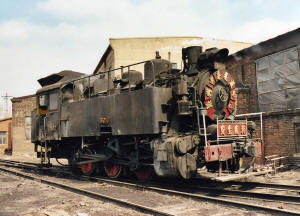

And that was for a first-class ticket in a Pullman sleeping car. In 1867, General William Tecumseh Sherman wrote, "The more we can kill this year, the less will have to be killed the next year, for the more I see of these Indians the more convinced I am that they all have to be killed or be maintained as a species of paupers."Īfter the railroad was built, the cost went down to $136 per ticket to take a seven-day journey from New York to San Francisco, which was still pricey but opened up the option to a slew of possible customers. Army gives us a glimpse of how apathetic many in power were to eliminating tribe members. Some disturbing documentation of the period from members of the U.S. Unfortunately, due to tensions and fights over land, many members of the Sioux and Arapahoe tribes were killed. The route also created tension among the Native American communities that resided where construction workers and freshly settled residents emigrated to. People lived in "canvas tents, plain board shanties, and turf-hovels," according to Samuel Bowles' writings. These towns got that name because they were mainly known for saloons, brothels, and gambling. Not only did they exploit labor, but they committed financial fraud by manipulating governmental funds and often employed corrupt tactics to crush their competitors.Īs the railroad popped up through the Midwest, communities commonly known as Hell on Wheels towns formed near its tracks. He was known for pushing the Central Pacific line workers to the breaking point in the hope that their project would be completed before Union Pacific's. The other three financiers were Leland Stanford, a California senator for whom Stanford University is named, Mark Hopkins, a California capitalist for whom San Francisco's Mark Hopkins Hotel is named, and Charles Crocker, a businessman, banker, and chief contractor of the Central Pacific line.Īccording to a San Francisco Chronicle review of the book The Associates: Four Capitalists Who Created California by Richard Rayner, the Big Four were commonly thought of as "robber baron-protagonists" because they engaged in a number of unethical business practices to reach their ends. Read on to get the truth behind this epic undertaking of man and machine.Ĭollis Potter Huntington (pictured above), who oversaw construction of the western portion of the project, came to California in search of gold in 1849. In some ways, its very existence is a representation of the Industrial Revolution itself. The story of the conception of the Transcontinental Railroad is filled with cases of corruption and crimes against humanity. But progress is never made without sacrifice. There is no doubt that significant progress was made in America in terms of trade, further financial development, and, most importantly, "westward expansion," according to the History Channel. And upon completion, it forever altered the shape of both business and pleasure by finally providing a feasible means of transportation from east to west. The railroad was so ambitious, in fact, that it took multiple investors, permission and aid from the government, hundreds of engineers, and thousands of laborers who braved harsh weather conditions, and unethical treatment, to complete it. We strive for accuracy and fairness.The First Transcontinental Railroad, which was in direct congruence with the Industrial Revolution, wasn't the first rail line in America, but it was certainly the most ambitious. To this day, Jones's name is synonymous with the America's great steam era. The ballad became extremely popular and made Casey Jones an American legend. The song was later adapted by William Leighton and sold to vaudeville artists. Shortly after Casey Jones's death, Wallace Saunders, an engine wiper who worked for I.E., wrote "The Ballad of Casey Jones," a tribute to Jones, who Saunders greatly admired. All passengers on the train survived, with the exception of Casey Jones, who was struck in the throat while still holding one hand on the break and one hand on the whistle. Jones then turned to Webb and told him to jump to safety, all the while still trying to slow the train. As quickly as he could, Jones grabbed the brake with one hand and pulled the whistle with the other in an attempt to warn those around the train. As Jones took a turn into Vaughan, Mississippi, Webb warned him that there was another train parked on the tracks ahead of them.


 0 kommentar(er)
0 kommentar(er)
